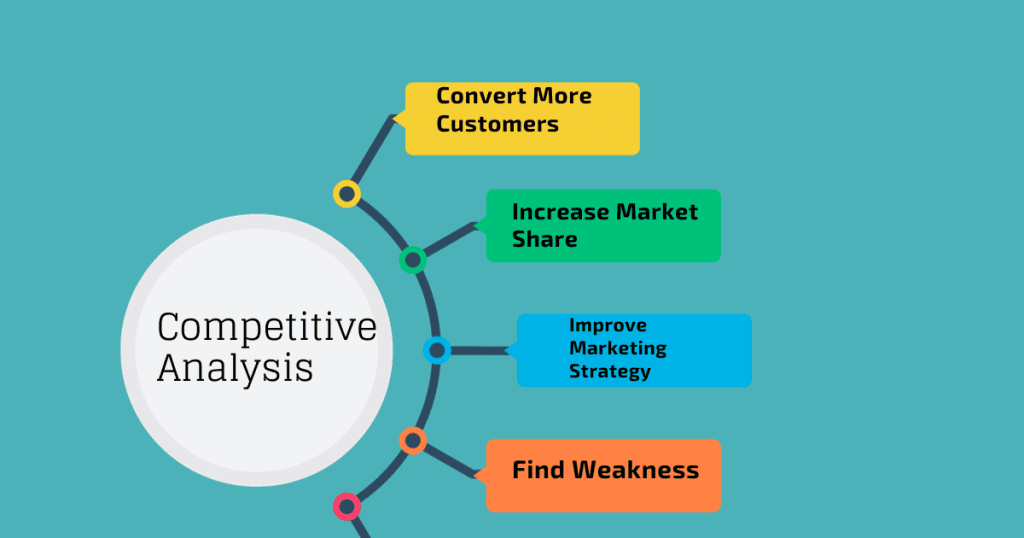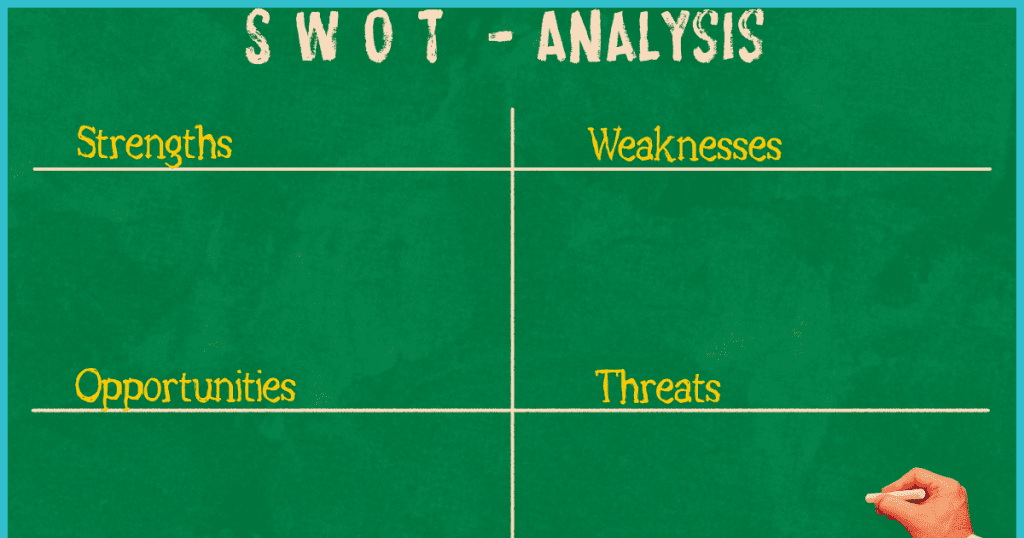
If you’re looking to improve your digital marketing strategy, one key step is to conduct a competitive analysis. By analyzing your competitors’ strengths and weaknesses, you can identify areas where you can differentiate yourself and gain an advantage in the market.
Navigating the dynamic terrain of digital marketing can often feel like an intricate game of chess. Every move counts, and understanding your opponents’ strategies can be the key to claiming victory in this digital checkmate. This is where mastering the art of how to do a competitive analysis for digital marketing becomes crucial.
It’s not just about peeking over the fence to see what your neighbor is up to; it’s a strategic dive into understanding their strengths, weaknesses, and game plans – all to refine your own digital marketing strategies. Whether you’re a seasoned marketer or a budding entrepreneur, knowing how to effectively analyze your competitors can give you that much-needed edge in a crowded online space.
So, let’s embark on this journey of discovery, where we decode competitor strategies, adapt winning tactics, and pave the way for our own digital marketing success.
Understanding the Competitive Analysis in Digital Marketing

To conduct a thorough competitive analysis in digital marketing, it’s important to first understand the competitive landscape. This involves identifying direct and indirect competitors, as well as evaluating market share and positioning.
Identifying Direct and Indirect Competitors
Direct competitors are businesses that offer similar products or services to yours and target the same audience. For example, if you sell athletic shoes, your direct competitors would be other athletic shoe companies. Indirect competitors, on the other hand, offer products or services that are not identical to yours but still compete for the same audience. For example, if you sell athletic shoes, your indirect competitors would be companies that sell other types of athletic gear, such as workout clothes or fitness equipment like a leg press machine.
To identify your direct and indirect competitors, start by researching your industry and the market. Look for businesses that offer similar products or services to yours and target the same audience. You can also use tools like SEMrush or Ahrefs to analyze your competitors’ websites and see what keywords they are ranking for.
Evaluating Market Share and Positioning
Once you have identified your direct and indirect competitors, it’s important to evaluate their market share and positioning. This will help you understand how your business fits into the competitive landscape and identify areas where you can differentiate yourself.
To evaluate market share, look at industry reports and market research to see how your competitors are performing. You can also analyze their website traffic and social media engagement to get a sense of their popularity and reach.
Positioning, on the other hand, refers to how your business is perceived in the market relative to your competitors. To evaluate positioning, look at your competitors’ messaging and branding to see how they differentiate themselves. You can also analyze their pricing strategies and customer reviews to see how they are positioning themselves in the market. Conducting an in-depth audience analysis can provide valuable insights into who your competitors are targeting and how effectively they engage those audiences. This helps refine your own positioning and ensures your marketing strategy resonates with the right customers.
By understanding the competitive landscape, you can develop a more effective digital marketing strategy that takes into account your competitors’ strengths and weaknesses. This will help you differentiate yourself in the market and gain a competitive advantage.
Conducting a SWOT Analysis

A SWOT analysis is a useful tool to identify the strengths, weaknesses, opportunities, and threats of your competitors. It can help you understand the market landscape and develop a better digital marketing strategy. Here’s how you can conduct a SWOT analysis:
Assessing Competitors’ Strengths and Weaknesses
Start by identifying your competitors and listing their strengths and weaknesses. This can include their products or services, marketing strategies, customer service, pricing, and reputation. Use a table or bullet points to organize your findings.
For example, you might find that one of your competitors has a strong social media presence, but their website is outdated and difficult to navigate. Another competitor might have a great product line, but their customer service is lacking.
Identifying Opportunities and Threats
Once you have assessed your competitors’ strengths and weaknesses, you can identify the opportunities and threats in the market. Opportunities are areas where you can gain a competitive advantage, such as a gap in the market or a new product or service. Threats are factors that could negatively impact your business, such as new competitors or changes in consumer behavior.
Again, use a table or bullet points to organize your findings. For example, you might find that there is a growing demand for eco-friendly products, which presents an opportunity for your business to develop a new line of sustainable products. On the other hand, you might find that a new competitor has entered the market with a disruptive business model, which could threaten your market share.
By conducting a SWOT analysis, you can gain valuable insights into the market landscape and develop a more effective digital marketing strategy. Remember to stay neutral and objective when assessing your competitors, and use your findings to inform your marketing decisions.
Analyzing Digital Marketing Strategies
When it comes to conducting a competitive analysis for digital marketing, analyzing your competitors’ digital marketing strategies is crucial. By doing so, you can gain insights into what is working and what is not working for them and identify areas where you can improve your own digital marketing strategy. Here are some key areas to focus on when analyzing your competitors’ digital marketing strategies.
Reviewing Website and Content Quality
One of the first things you should do when analyzing your competitors’ digital marketing strategies is to review their website and content quality. This involves looking at the design, layout, and user experience of their website, as well as the quality and relevance of their content. Some key factors to consider include:
- Website speed: Is the website fast and responsive?
- Navigation: Is the website easy to navigate and find information?
- Content relevance: Is the content relevant to the target audience?
- Content quality: Is the content well-written, informative, and engaging?
- Call-to-Action: Is there a clear call-to-action on the website?
Evaluating Social Media Presence
Social media is an important aspect of any digital marketing strategy, and it is essential to evaluate your competitors’ social media presence to gain insights into their approach. Some key factors to consider when evaluating your competitors’ social media presence include:
- Social media platforms: Which social media platforms are they using?
- Content strategy: What type of content are they sharing on social media?
- Engagement: How engaged is their audience with their social media content?
- Frequency: How often are they posting on social media?
By evaluating these factors, you can gain insights into how your competitors are using social media to engage with their target audience and identify areas where you can improve your own social media strategy.
Assessing SEO and PPC Campaigns
Search engine optimization (SEO) and pay-per-click (PPC) advertising are crucial components of any digital marketing strategy. When analyzing your competitors’ digital marketing strategies, it is important to assess their SEO and PPC campaigns to gain insights into their approach. Some key factors to consider when assessing your competitors’ SEO and PPC campaigns include:
- Keywords: What keywords are they targeting in their SEO and PPC campaigns?
- Ad copy: How effective is their ad copy?
- Landing pages: What type of landing pages are they using for their PPC campaigns?
- Organic traffic: How much organic traffic are they receiving from search engines?
- Paid search: How effective are their paid search campaigns?
By evaluating these factors, you can gain insights into how your competitors are using SEO and PPC to drive traffic to their website and identify areas where you can improve your own SEO and PPC strategy.
Leveraging Tools for Competitive Analysis

To conduct a comprehensive competitive analysis for your digital marketing strategy, you need to leverage the right tools. Here are some of the most popular tools that you can use to gain insights into your competitors’ strategies:
Utilizing SEMrush and Ahrefs
SEMrush and Ahrefs are two of the most popular SEO tools that can help you analyze your competitors’ websites. You can use these tools to identify your competitors’ top-performing pages, backlinks, and keywords. You can also use these tools to monitor your competitors’ search engine rankings and track their progress over time.
One of the most useful features of SEMrush and Ahrefs is their ability to identify gaps in your own website’s content. By analyzing your competitor’s top-performing pages, you can identify topics that you may have overlooked or missed. You can then create your own content around these topics to attract more traffic to your website.
Employing Google Analytics and SimilarWeb
Google Analytics and SimilarWeb are two tools that can help you analyze your competitors’ website traffic. With Google Analytics, you can track your competitors’ website traffic sources, demographics, and behavior. You can also use this tool to identify your competitors’ top-performing pages and keywords.
SimilarWeb is another tool that can help you analyze your competitors’ website traffic. With SimilarWeb, you can see your competitors’ website traffic sources, engagement metrics, and audience demographics. You can also use this tool to identify your competitors’ top-performing pages and keywords.
Exploring Facebook Ad Library
Facebook Ad Library is a tool that can help you analyze your competitors’ Facebook ad campaigns. With this tool, you can see your competitors’ active and inactive ads, ad spend, and targeting options. You can also use this tool to identify your competitors’ ad creative and messaging strategies.
By analyzing your competitors’ Facebook ad campaigns, you can identify new ad formats, targeting options, and creative messaging that you can use to improve your own Facebook ad campaigns.
Formulating a Robust Digital Marketing Strategy
To stay ahead of your competitors, you need to develop a robust digital marketing strategy that will help you build brand awareness, attract and retain customers, and grow your business. The best extension for streaming can also enhance your content delivery and boost audience engagement if video is part of your approach. Here are some key steps to consider when formulating your digital marketing strategy.
Defining Unique Selling Propositions
Your unique selling proposition (USP) is what sets you apart from your competitors. It’s what makes your product or service unique and valuable to your target audience. To define your USP, you need to understand your customers’ needs and pain points, and identify how your product or service can solve their problems better than your competitors.
Developing Effective Messaging and Pricing Strategies
Once you have defined your USP, you need to develop messaging and pricing strategies that effectively communicate your value proposition to your target audience. Your messaging should be clear, concise, and memorable, and should highlight the benefits of your product or service. Your pricing strategy should be competitive, but also reflect the value that you offer.
Building and Monitoring Digital Marketing Channels
To reach your target audience, you need to build and monitor digital marketing channels that are effective and efficient. This may include social media, email marketing, search engine optimization (SEO), pay-per-click (PPC) advertising, and more. You should monitor your digital marketing efforts regularly to ensure that you are reaching your target audience and achieving your marketing goals.
By following these steps, you can develop a robust digital marketing strategy that will help you stand out from your competitors and achieve your marketing objectives.





